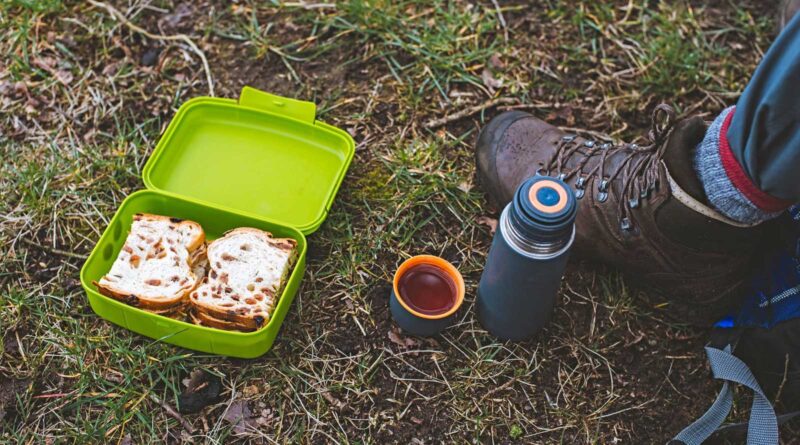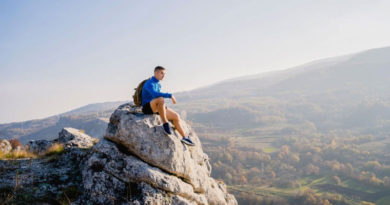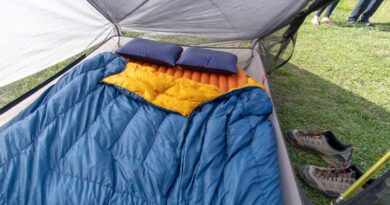How to Keep Food Cold While Backpacking?
Food is a “must” for any backpacking trip, but as anyone who has gone backpacking before knows, keeping your perishable food cold in the backcountry requires some pre-planning and effort.
The following informational guide will help you learn who to keep your food cold on your next backpacking trip.
Choose a Cooler that Suits your Needs
There are many different cooler types to choose from on today’s market. The four primary coolers you may encounter when planning a backpacking trip are traditional coolers, solar-powered coolers, and insulated fabric coolers.
Traditional coolers are the hard, rotomolded heavy duty coolers that you often see people bring on long trips, which keep food cool through inserted ice packs or material; these can be strapped to certain types of backpacks.
Solar-powered coolers are designed to be powered via solar technology rather than solely through insulation and ice packs; some of these are designed backpack-style and some can be strapped on.
Insulated fabric coolers are soft pouches with insulating material on the inside; while these are typically small, there are larger fabric coolers available, including backpack-style soft coolers ideal for backpacking.
As a general rule of thumb, you will need to consider two factors when deciding on which cooler type suits your needs:
- The amount of food you will be bringing
- The amount of weight you’re willing to carry
The more perishable food you want to bring, the larger the cooler – traditional coolers (solar-powered or otherwise) are ideal for carrying larger amounts of food that needs to be kept cold.
Smaller, softer insulated fabric coolers are ideal when you are only packing a smaller amount of food, as well as if you want to keep the overall weight of your pack down as much as possible.
If you are concerned about the weight or your overall ability to carry the food, you’ll want to consider an ergonomic backpack cooler.
Keep Frozen Packs in your Cooler
If you are using a traditional or solar powered cooler, you will want to boost the cooling effects with some frozen packs.
There are a few different options to choose from regarding how to keep food colder inside your cooler, including:
- Bags of ice
- Frozen gel packs
- Dry ice
- Frozen water bottles
You need to consider the pros and cons of each type of “ice” before your trip. Bags of ice work well, but eventually they will melt, which will cause water leakage in the cooler. Frozen gel packs do not melt, but they may not get as cold as a traditional ice pack.
Dry ice is an excellent option if you want to avoid melted water, but remember to deal with it safely – read all the safety instructions before using it on your trip. Frozen water bottles are another excellent option as once they melt, you will have some ice-cold water available to drink.
Pack the Cooler as Tightly as Possible
It’s not enough to have ice or another frozen element in your cooler. In order for your perishable food to stay cold, you need to pack the cooler as tightly as possible.
The more air in the cooler, the quicker the food will start to warm up. If you don’t have enough food to adequately fill up the cooler, stuff it with shirts or something else that will remove empty space.
Remember to pack the cooler appropriately: cool air falls and warm air rises. So, make sure that the bottom of your cooler is lined with frozen packs or the equivalent in order to build up a solid base of coldness at the bottom of the cooler.
You should also put a layer of ice (or whatever option you’ve chosen) in between each layer of food. This will keep the food in your cooler at a colder, safer temperature for longer periods of time.
Freeze Everything Beforehand
This is a trick that every backpacker needs to know: if you want your food to stay as cold as possible, don’t just stick food from the fridge right into your cooler.
Instead, freeze everything before your trip so that it will slowly and safely go from freezing to cooking-safe cold temperatures as your trip wears on.
For example, if you plan to bring meat with you, freeze the meat beforehand. This will keep the meat frozen and cold for longer than if you were to stick meat from the fridge into your cooler.
Freezing the food has another bonus as well: the frozen items will act as additional ice packs that will keep the rest of the items in the cooler at the right temperature.
Eat Fresh Food first, then move on to Non-Perishables
If you will be bringing non-perishables along on your backpacking trip, then you should plan your meals accordingly. Eat fresh, perishable food first, and then stick to non-perishable options towards the end of your backpacking trip, when your cooler will likely not be as cold as it was during the beginning of the trip.
Having a game plan for your meals will also make your trip go smoothly, as you won’t be struggling to come up with meal ideas on the fly; you also won’t have to worry about suddenly needing to eat tons of perishable food before it goes bad.
If you aren’t keen on using non-perishables for your meals, then make sure you pack your cooler according to each day’s meals: keep the stuff you want to eat first on the top, and food for meals later on in your trip on the bottom.
This will help the food on the bottom stay cold, since you won’t be rummaging around in the cooler and adding unnecessary space.
Final Verdict
Backpacking is a rewarding experience, especially if you take the time to plan your trip properly. If you are planning a backpacking trip, make sure you keep the above essential information regarding keeping your food cold in mind.




